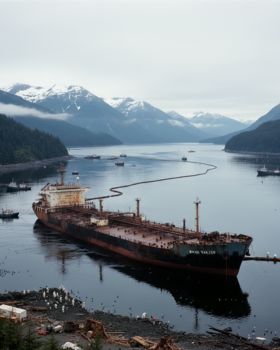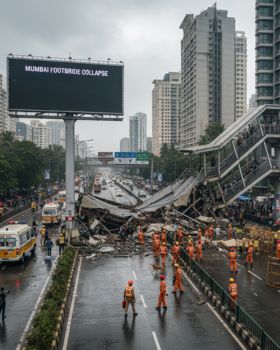Disclaimer:
This post is intended for educational purposes only and is based on publicly available findings from official investigations. No claims or allegations are made beyond those reported by recognized authorities.
The Deepwater Horizon disaster, one of the most tragic industrial incidents in recent history, occurred on April 20, 2010. An explosion aboard the offshore drilling rig—operated by Transocean and leased by BP—led to the loss of 11 workers’ lives and a spill of approximately 4.9 million barrels of oil into the Gulf of Mexico. The BP oil spill Gulf of Mexico not only caused extensive environmental damage but also became a defining case study in contractor safety failures. The environmental, economic, and human costs were staggering, but perhaps even more important are the systemic lessons it highlighted about contractor safety, communication, and risk management failures.
Rather than casting blame, revisiting this tragedy offers an opportunity to understand how collaborative safety practices between contractors and principal operators can be strengthened to prevent similar occurrences in the future.
Understanding the Root Cause
Investigations into the Deepwater Horizon oil spill revealed a cascade of technical failures, poor decision-making, and miscommunication between multiple contractors. The U.S. government’s official report pointed to a series of missed signals, flawed assumptions, and insufficient safeguards. Yet, what stood out most was the coordination challenges among multiple contractors—each with different safety practices and operational responsibilities.
The complexity of such a multi-contractor environment highlights a key concern: when accountability is divided, safety can suffer.
The Safety Breakdown
Several safety oversights were identified that, had they been addressed more systematically, might have altered the course of events. These included:
• Reports identified possible shortcomings in the testing and interpretation of pressure data during cementing operations.
• Inadequate communication between different parties involved in the rig operations about known risks was a noted concern.
• A lack of a cohesive safety oversight system for managing multiple contractors was highlighted as a critical gap.
• Delayed response to warning signs in the hours before the blowout.
Each of these issues points not just to human error, but to the absence of a centralized system that could offer greater visibility, coordination, and safety oversight in real-time.
The Cost of Unstructured Contractor Management
In high-risk environments like offshore drilling, it’s not uncommon to have multiple contractors with specialized roles. However, without a unified platform for tracking contractor performance, training, certifications, and compliance, safety becomes fragmented.
The 2010 Gulf oil spill demonstrated the potential risks when operations involve multiple parties without integrated communication systems. Contractors may fulfill their assigned roles, but without shared data and clear communication channels, early warnings might go unnoticed—or unheeded. Risk is compounded when different organizations operate under varied safety protocols without a single, enforceable standard.
Risk Awareness and Prevention: The Human Element
Investigations into the Deepwater Horizon tragedy noted that several early warning signs were observed in the lead-up to the explosion. Workers noticed anomalies and irregular pressure readings before the explosion, but without cohesive communication and authority to act, these concerns were either dismissed or misunderstood.
This underscores a powerful lesson: technical systems must be matched by a culture of safety that empowers workers at every level—from floorhands to engineers—to speak up and act.
Promoting awareness, reporting, and proactive measures can be the difference between life and death. Organizations that prioritize risk training and contractor competence often fare better in preventing critical failures.
Contractor Safety: Moving Toward Better Practices
Since 2010, many industries have begun to re-evaluate how they manage and monitor contractors. Several steps have become widely recognized as essential:
• Standardized Induction and Training: Ensuring all contractors receive the same onboarding, regardless of their employer, is crucial for alignment.
• Centralized Documentation: Safety credentials, risk assessments, work permits, and compliance documents need to be stored and accessible in one location.
• Continuous Monitoring: Real-time visibility into contractor activities helps flag non-compliance and address hazards early.
• Unified Safety Protocols: All parties on-site must follow the same risk control procedures, irrespective of their organization.
These practices contribute to building a strong safety culture where everyone—whether operator or contractor—understands their responsibilities and feels equipped to carry them out.
Technology’s Role in Enhancing Safety Oversight
Today, many companies are turning to contractor software and digital portals to manage these essential safety elements more efficiently. These systems allow for:
• Central tracking of contractor approvals, certifications, and performance.
• Integration of permit-to-work systems with contractor activity logs.
• Automated alerts and workflows for non-compliance or missed training.
• Auditable trails for safety inspections, inductions, and incident reports.
While no system can fully eliminate risk, such tools could help strengthen awareness, coordination, and response, especially in complex environments like offshore rigs or industrial plants.
A Future Shaped by Lessons from the Past
The Gulf of Mexico oil spill serves as a reminder of the importance of effective contractor management in high-risk industries—it is a safety-critical function. The impact of this disaster went far beyond environmental damage; it exposed gaps in how organizations share responsibility and manage risk collectively.
As we look to the future, it’s vital that organizations commit not only to technological improvements but also to fostering a culture of shared safety ownership. Risk can never be fully eliminated, but it can be significantly reduced when communication is open, processes are transparent, and all workers—regardless of employer—are equally empowered to uphold safety.
Conclusion: Strengthening Contractor Safety through Smarter Oversight
In the aftermath of events like Deepwater Horizon, the need for reliable contractor oversight systems becomes clear. At SHEQ Network, we understand how critical it is to ensure safety and compliance at every level. Our Contractor Portal and Contractor Software Solutions are designed to support organizations in creating safer worksites by offering:
• Centralized contractor documentation and safety training records
• Real-time visibility into contractor compliance
• Seamless permit-to-work integration
• Tools to align all parties with a unified safety standard
By using technology to support risk management, organizations can build not just safer worksites, but stronger partnerships with the contractors who make their operations possible.
🚀 Learn how SHEQ Network can support safer workflows!
📧 info@sheqnetwork.com | 📞 +353 21 4536034
🔗 Learn more at sheqnetwork.com
📅 Ready for a personalized demo? Book your session here
Let’s build a safer future — together.





One Comment